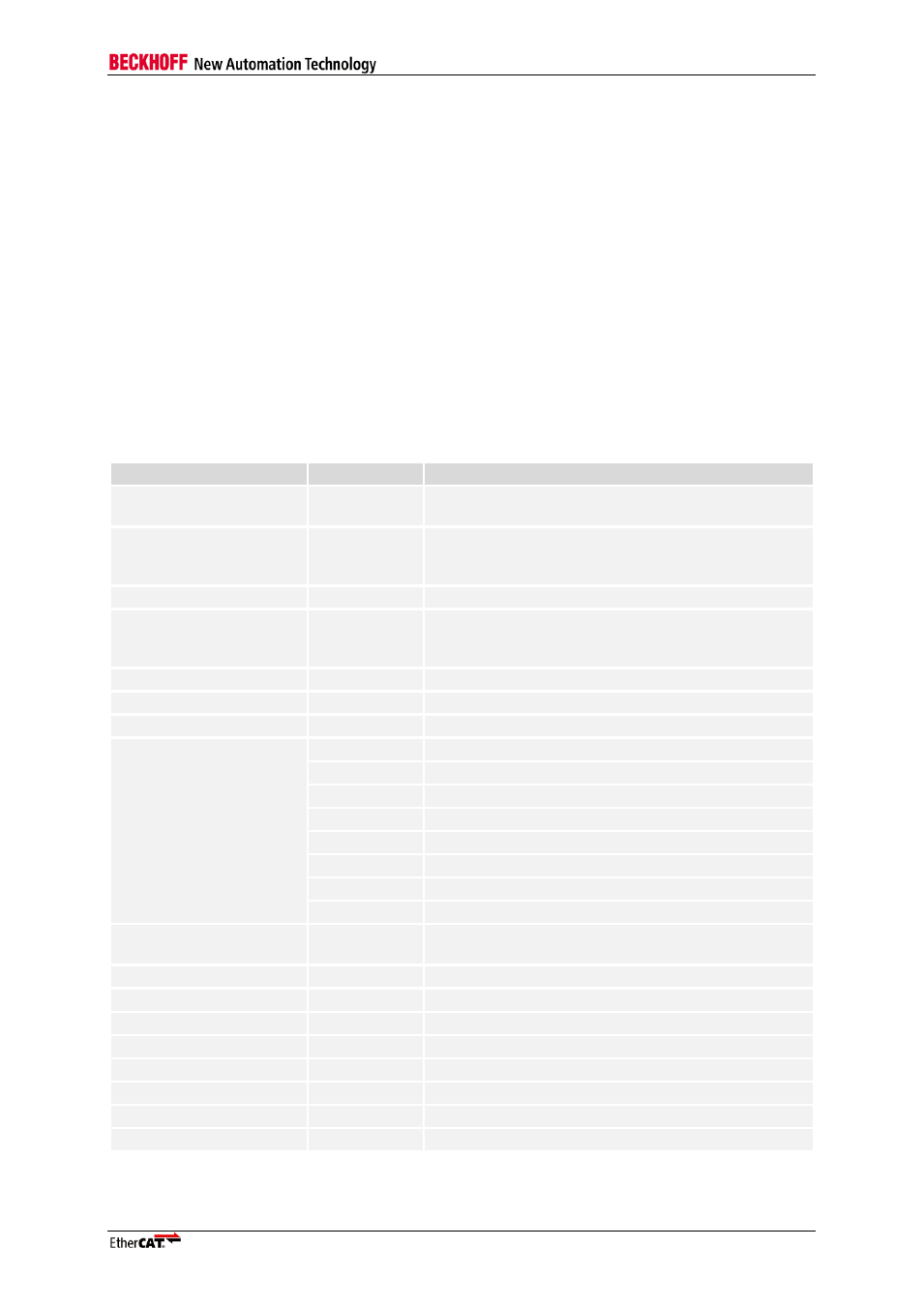7 fpga resource consumption, Fpga resource consumption – BECKHOFF EtherCAT IP Core for Altera FPGAs v3.0.10 User Manual
Page 69

FPGA Resource Consumption
Slave Controller
– IP Core for Altera FPGAs
III-57
7
FPGA Resource Consumption
The resource consumption figures shown in this chapter reflect results of example synthesis runs and
can only be used for rough resource estimations. The figures are subject to quite large variations
depending on design tools and version, FPGA type, constraints (e.g., area vs. speed), total FPGA
utilization (design tools typically stop optimization if the timing goal is reached), etc. No extra effort
was undertaken to achieve optimum results, i.e. by sophisticated constraining and design flow setting.
For accurate resource consumption figures, please use the evaluation license of the EtherCAT IP
Core and synthesize your individual configuration for the desired FPGA.
The figures of the following table do not imply that the individual features are operational in the
selected FPGA (i.e., that the resources are sufficient or that timing closure is achievable). The
synthesis runs where performed without timing constraints, without location constraints, and without
bitstream generation.
The EtherCAT IP core resource consumption overview figures are based on EtherCAT IP Core for
Altera FPGAs Version 3.0.2, Altera Quartus II 12.1 SP1, and Altera Cyclone IV devices.
Table 17: Typical need of Logic Cells (LE) for main configurable functions
Configurable Function
Approx. LE
Details
Minimum Configuration
3,850
0 x SM, 0 x FMMU, no features, no DC, PDI: 32 Bit
digital I/O, 1 kByte DPRAM, 1 port MII
Maximum Configuration
32,500
8 x SM, 8 x FMMU, all features except for EEPROM
Emulation, DC 64 bit, PDI: SPI, GPIO, 60 kByte
DPRAM, 3 ports MII
Additional port
1,200
all port features enabled (without DC Receive time)
PHY features
950
All MII features: Management Interface, MI link
detection and configuration, TX Shift, and enhanced
link detection (3 ports)
SyncManager
1,100
per SyncManager
FMMU
700
per FMMU
DPRAM
500
60 KB (M4K/M9K)
Distributed Clocks
200
Receive time per port
1,300
System time (32 bit)
1,800
SyncSignals (32 bit)
750
LatchSignals (32 bit)
1,800
System time (64 bit)
3,400
SyncSignals (64 bit)
1,300
LatchSignals (64 bit)
350
SyncManager Event Times
Feature details
800
all features except for EEPROM Emulation and DC
Receive time
PDI
32 Bit Digital I/O
1,150
SPI
2,400
8 Bit µController
1,750
16 Bit µController
2,300
Avalon
1,700
25 MHz, 32 Bit
AXI
2,800
25 MHz, 32 Bit
GPIO
550
8 Byte